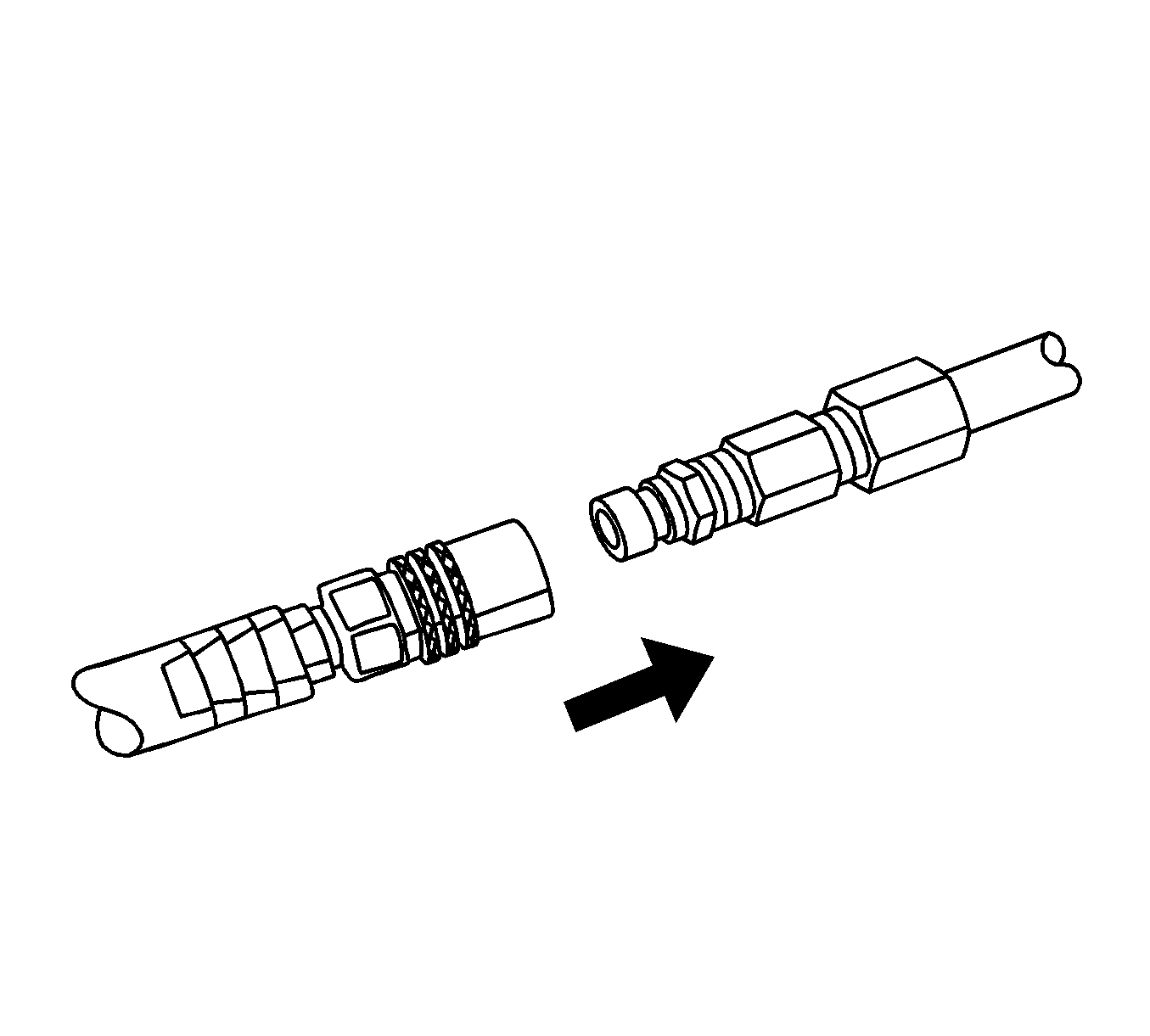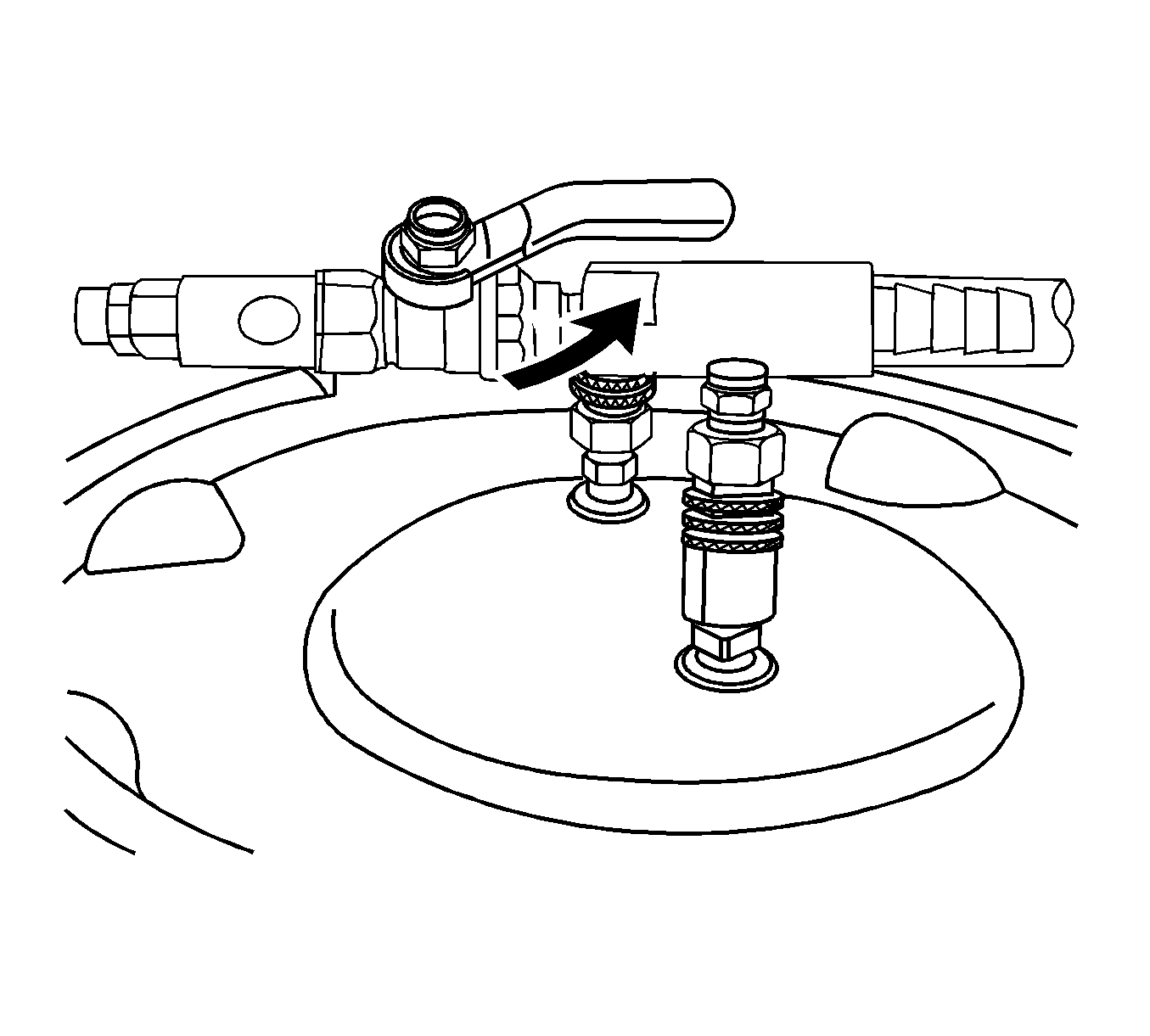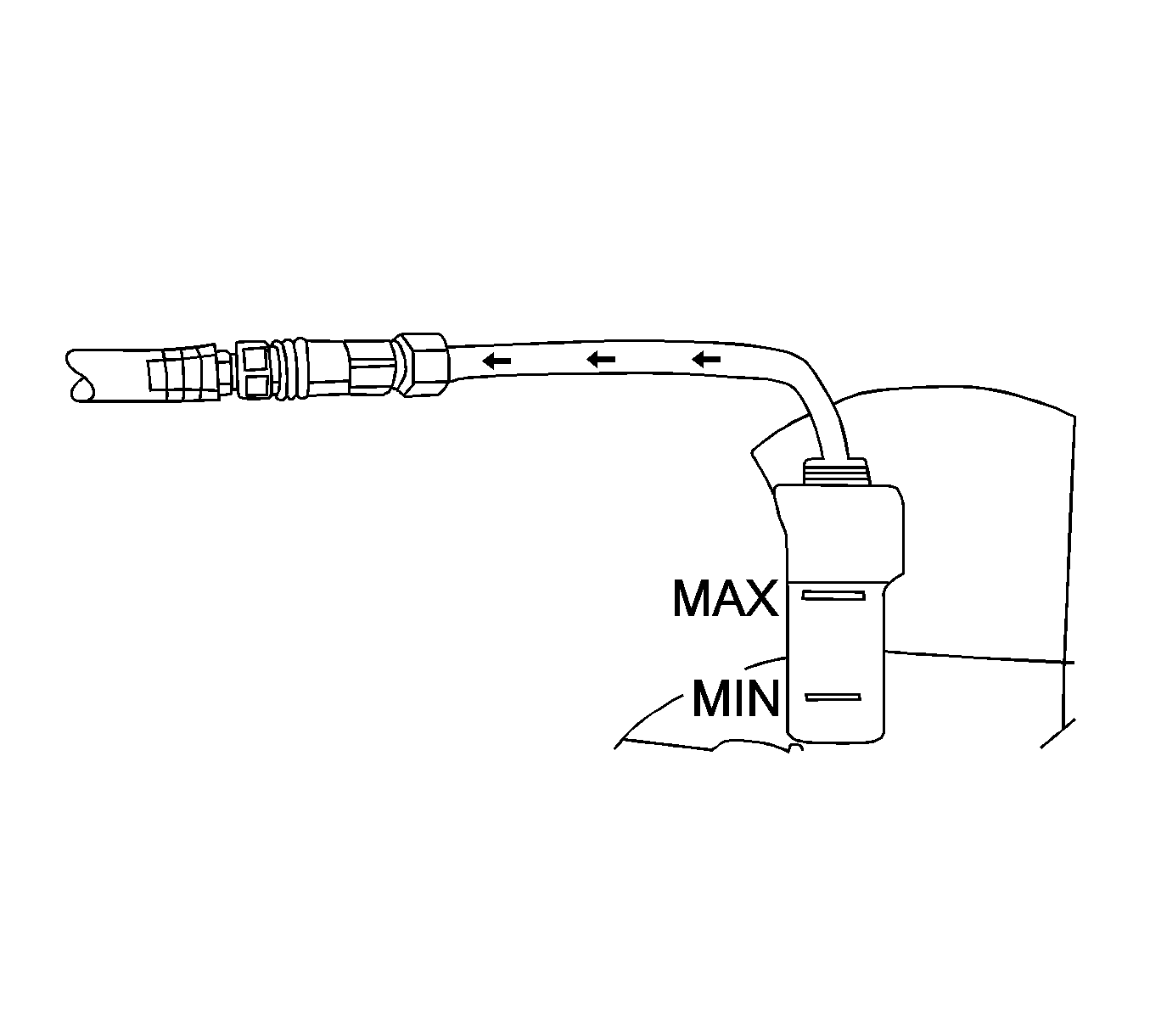Charge Air Cooling System Draining and Filling Static Fill
Tools Required
J 26568 Coolant and Battery Tester
Draining Procedure
- Remove the charge air cooling system pressure cap (1).
- Remove the charge air coolant cap (2).
- Raise and support the vehicle. Refer to Lifting and Jacking the Vehicle.
- Remove the front air deflector. Refer to Front Air Deflector Replacement.
- Place a drain pan under the charge air coolant radiator.
- Remove the charge air coolant radiator drain plug.
- Drain the charge air cooling system.
- Inspect the coolant.
- Follow the appropriate procedure based on the condition of the coolant.
- Install the charge air coolant radiator drain plug.
- Install the front air deflector. Refer to Front Air Deflector Replacement.
- Lower the vehicle.

Caution: To avoid being burned, do not remove the charge air coolant cap while the system is hot. The cooling system will release scalding fluid and steam under pressure if charge air coolant cap is removed while the system is still hot.
Important: Make sure the intercooler system is cool and the pump is not running.
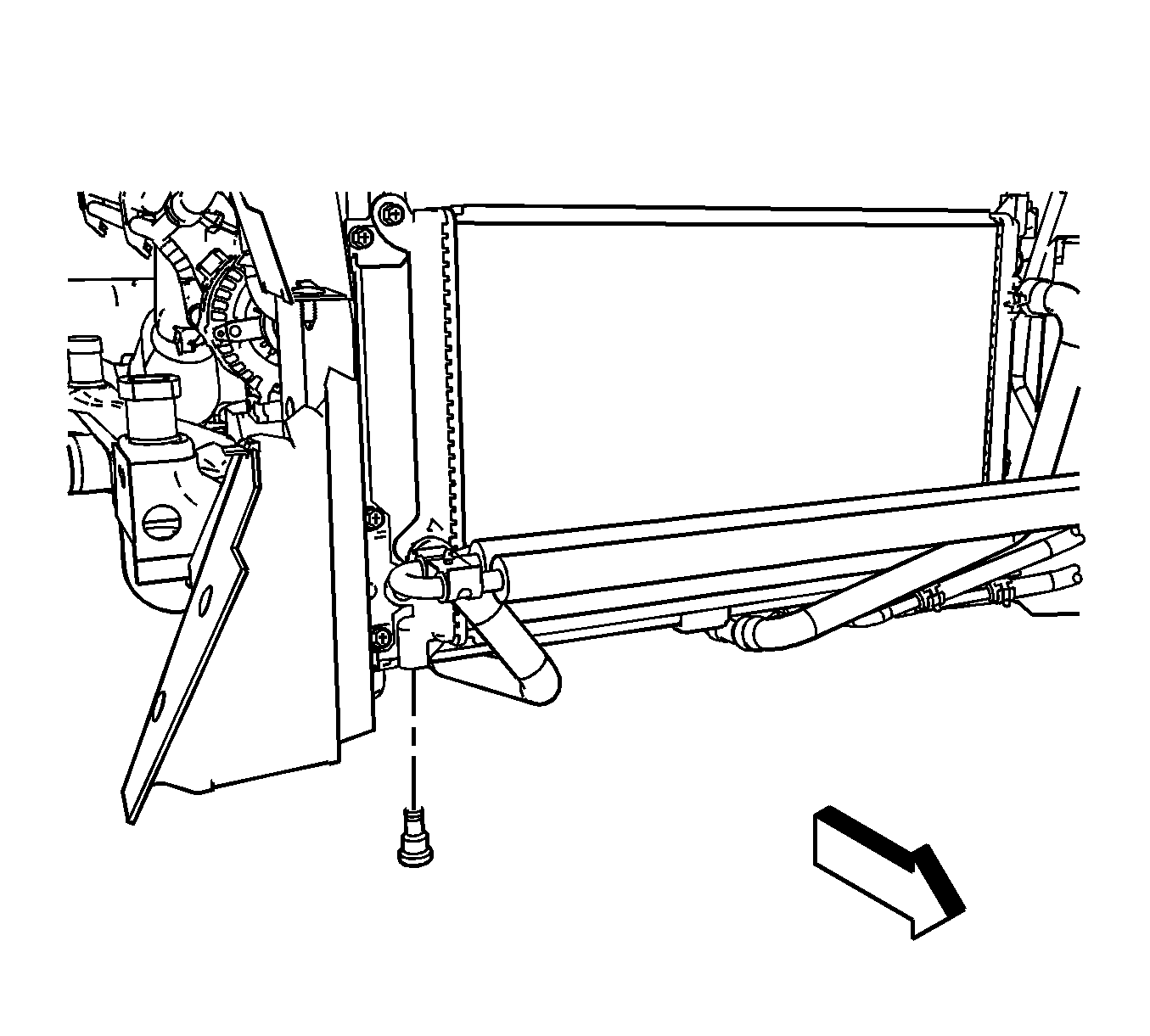
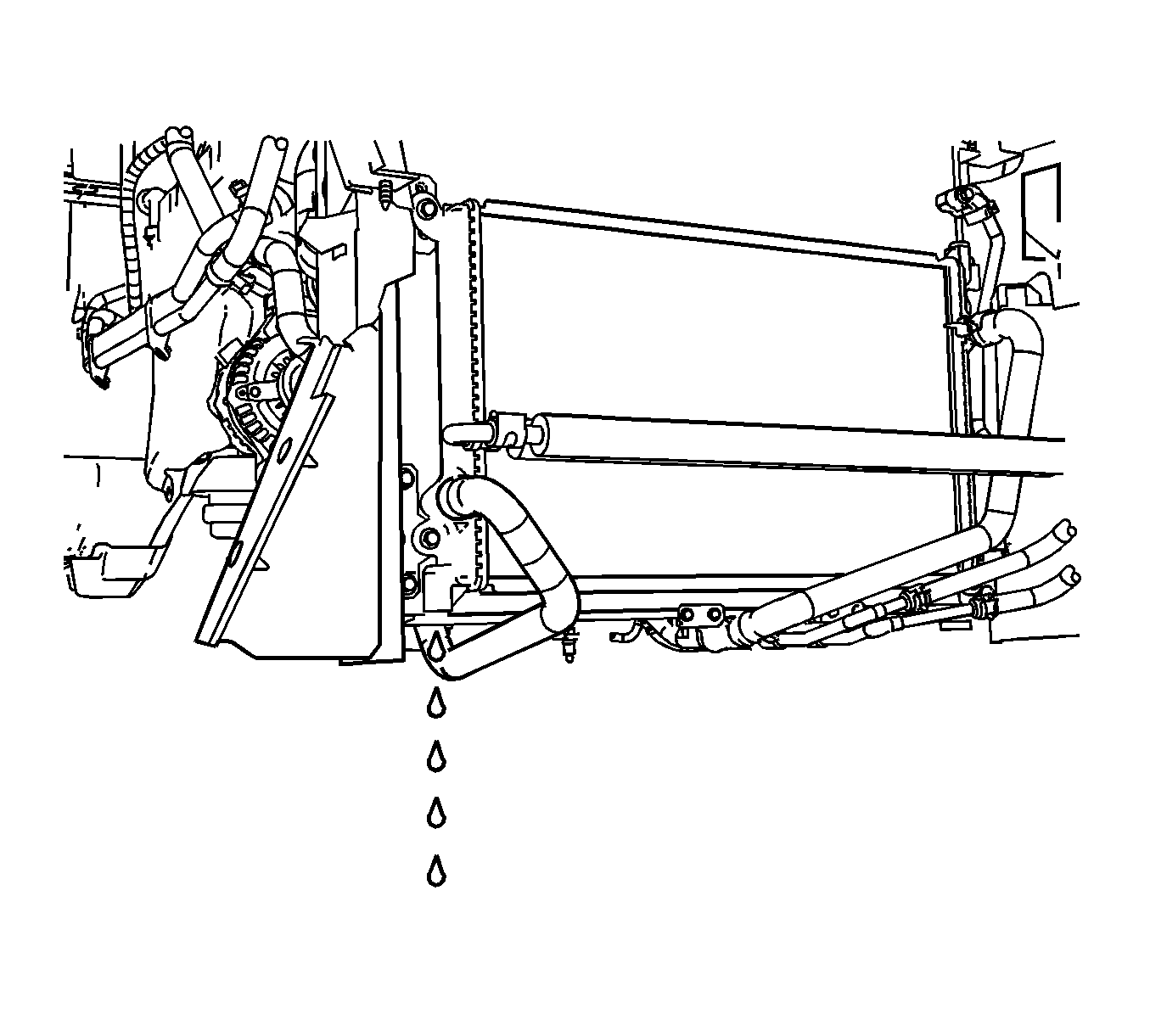
| • | Normal in appearance -- follow the filling procedure. |
| • | Discolored -- follow the flush procedure. Refer to Flushing. |
Notice: Refer to Fastener Notice in the Preface section.
Tighten
Tighten the plug to 10 N·m (89 lb in).
Filling Procedure
- Loosen the charge air coolant radiator vent plug.
- Place a shop towel around the charge air coolant radiator vent plug to absorb any leakage.
- Using a small funnel, slowly fill the charge air cooling system through the charge air coolant cap port with a 50/50 coolant mixture until coolant is present at the charge air coolant radiator vent plug.
- Hand tighten the charge air coolant radiator vent plug.
- Using a small funnel, continue to slowly fill the charge air cooling system through the charge air coolant cap port until coolant is level with the charge air coolant cap port.
- Install the charge air coolant cap.
- Install the charge air coolant cap bolts
- Slowly fill the charge air cooling system through the charge air coolant fill neck until coolant reaches the COLD FILL mark.
- Cycle the charge air cooling pump ON and continue to slowly fill through the charge air coolant fill neck until the level stabilizes at the COLD FILL mark.
- Slowly loosen the charge air coolant radiator vent plug until coolant is present.
- Remove the shop towel from around the vent port.
- Tighten the charge air coolant radiator vent plug.
- Continue to slowly fill through the charge air coolant fill neck until the level has stabilized at the COLD FILL mark.
- Cycle the charge air coolant pump OFF.
- Remove the charge air coolant cap bolts.
- Remove the charge air coolant cap.
- Ensure that coolant is almost level with the coolant cap fill port.
- Install the charge air coolant cap.
- Install the charge air coolant cap bolts.
- Cycle the charge air coolant pump ON for 3 minutes.
- Cycle the charge air coolant pump OFF.
- Fill through the charge air coolant fill neck until the level stabilizes at the COLD FILL mark.
- Repeat steps 19-21 until level is stabilized at the COLD FILL mark with the charge air coolant pump in the OFF position.
- Inspect the concentration of the engine coolant, using the J 26568 .
- Install the charge air cooling system pressure cap.
- Inspect the charge air cooling system for leaks.

Notice: The procedure below must be followed. Improper coolant level could result in poor system performance.
Important: The charge air cooling system is filled through the charge air coolant cap and the charge air coolant fill neck.
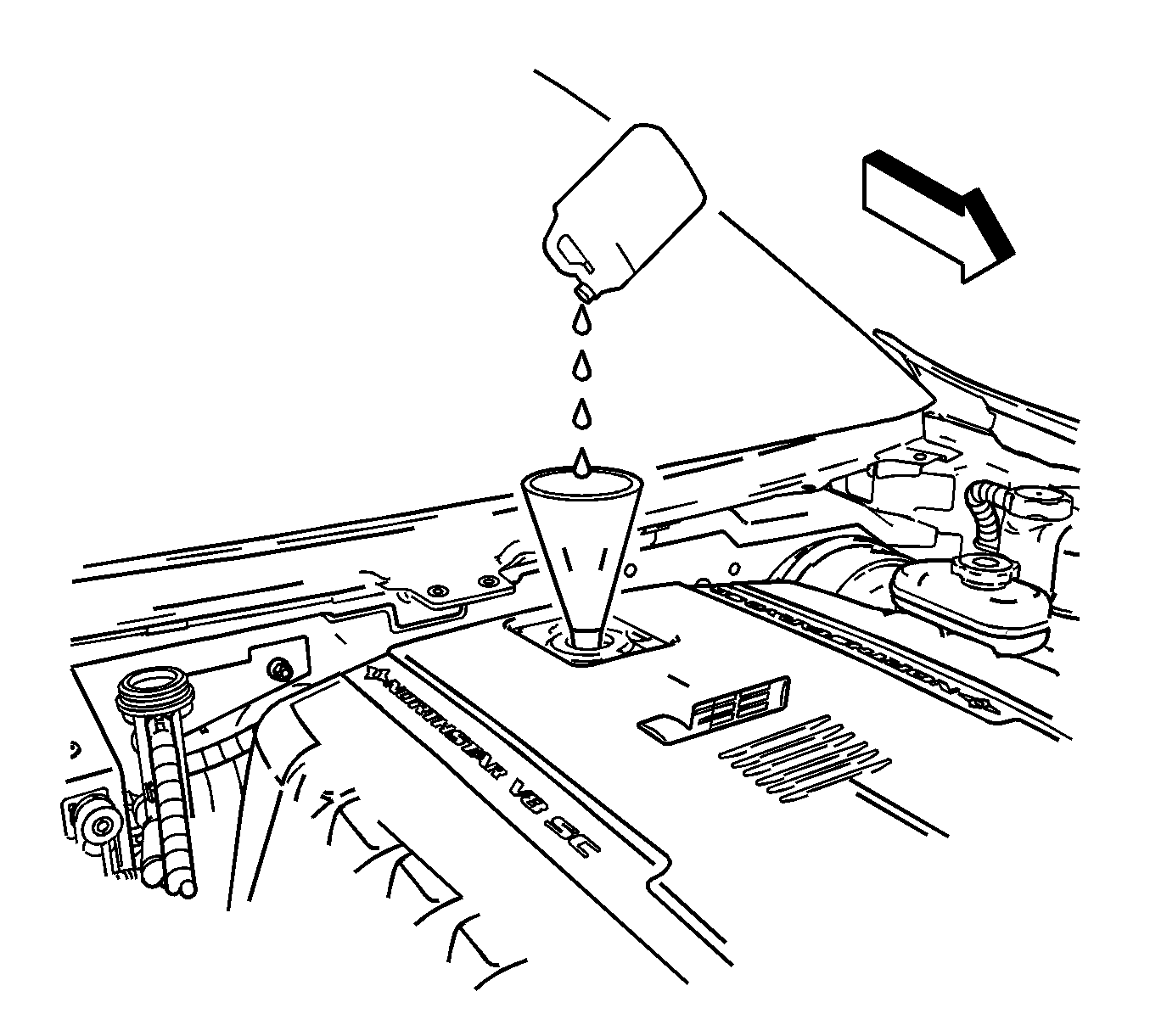
Important:
• Use a 50/50 mixture of DEX-COOL® antifreeze and clean drinkable water. • Pour coolant in very small amounts to avoid coolant spillage from the charge air coolant port or from the funnel.
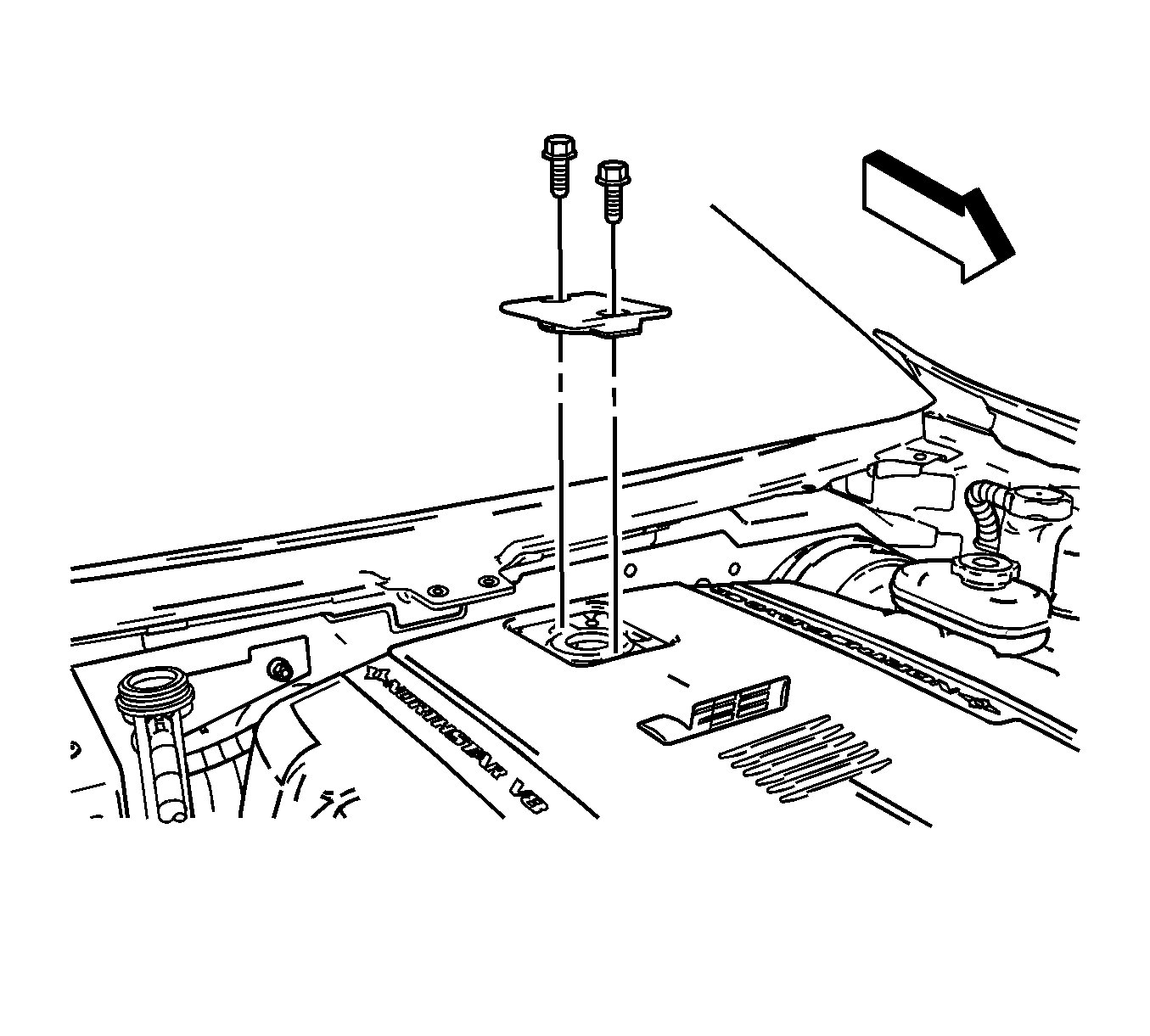
Important: Do not cycle the charge air cooling system without the charge air cooling cap in place or coolant loss will occur.
Tighten
Tighten the plug to 10 N·m (89 lb in).
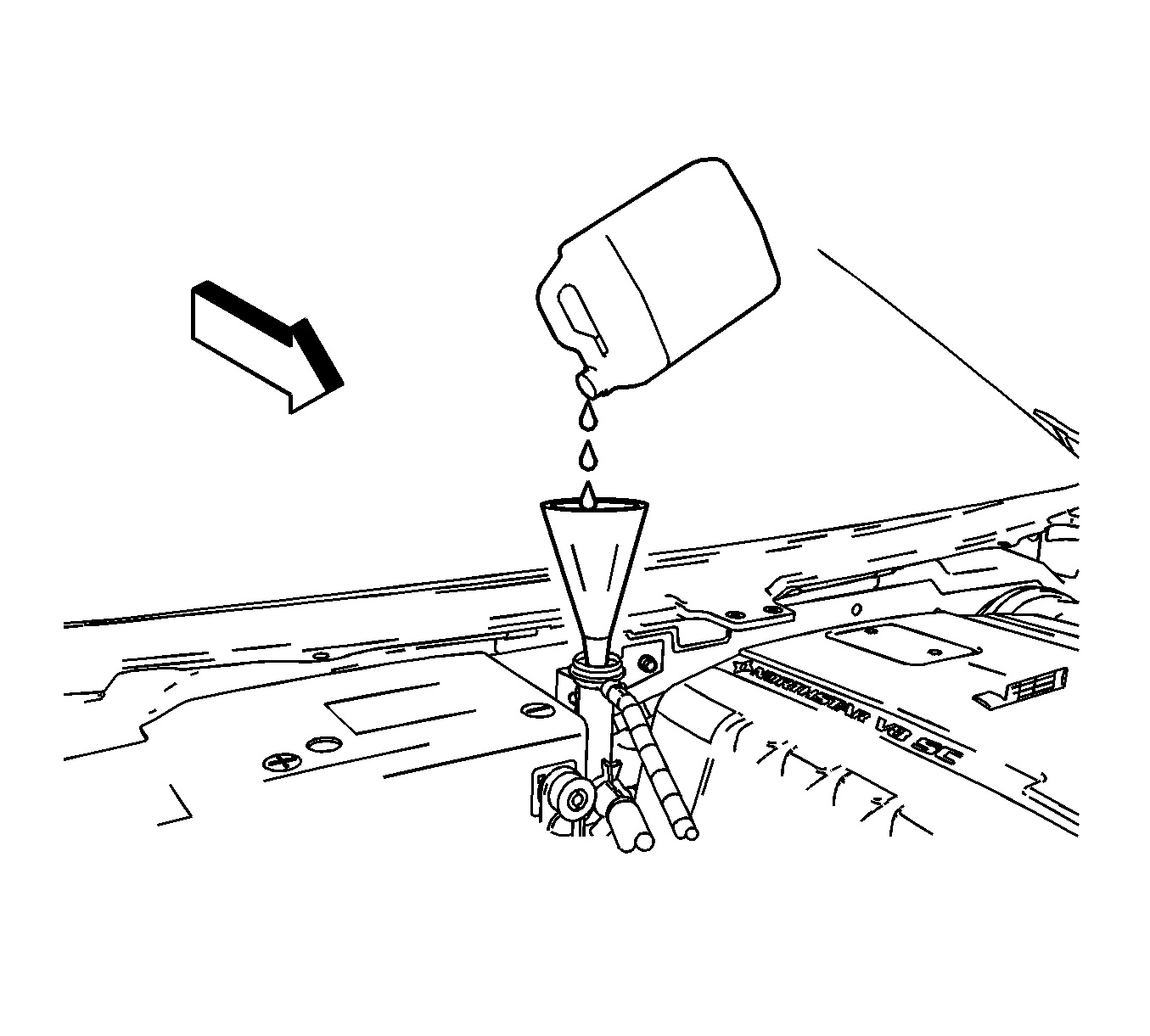
Important: Cycle the charge air coolant system by using the Tech 2 or by starting the engine.

Tighten
Tighten the plug to 10 N·m (89 lb in).

Top off with the 50/50 coolant mixture through the charge air coolant cap port, if necessary.
Tighten
Tighten the plug to 10 N·m (89 lb in).
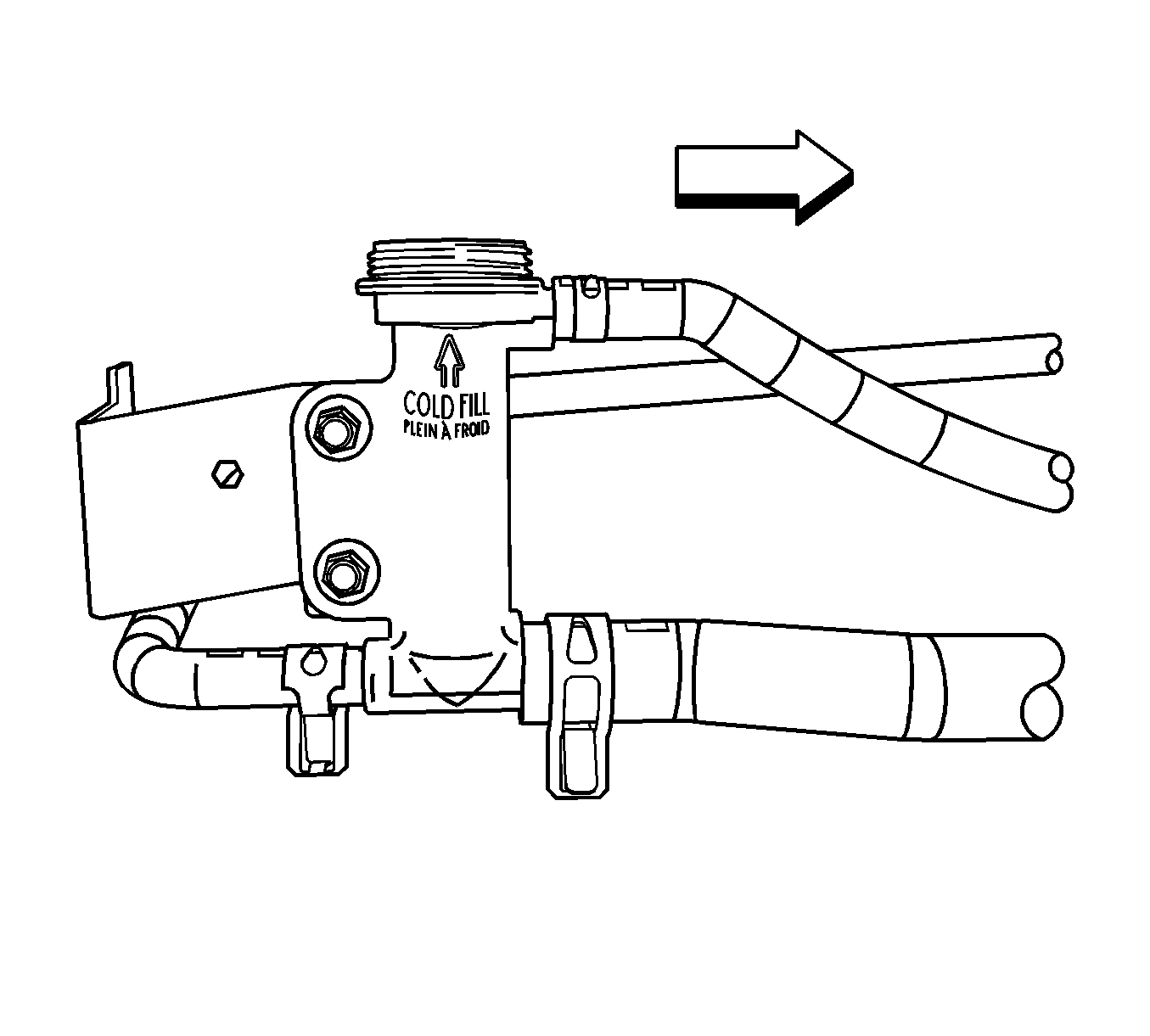
Important: Do not cycle the charge air cooling system without the charge air cooling cap in place or loss of coolant will occur.
Charge Air Cooling System Draining and Filling Vac N Fill
Tools Required
| • | J 26568 Coolant and Battery Fluid Tester |
| • | J 46143 Cooling System Adapter |
| • | GE-47716 Vac N Fill Coolant Refill Tool |
Draining Procedure
- Remove the charge air cooling system pressure cap (1).
- Remove the charge air coolant cap (2).
- Raise and support the vehicle. Refer to Lifting and Jacking the Vehicle.
- Remove the front air deflector. Refer to Front Air Deflector Replacement.
- Place a drain pan under the charge air coolant radiator.
- Remove the charge air coolant radiator drain plug.
- Drain the charge air cooling system.
- Inspect the coolant.
- Follow the appropriate procedure based on the condition of the coolant.
- Install the charge air coolant radiator drain plug.
- Install the front air deflector. Refer to Front Air Deflector Replacement.
- Lower the vehicle.
Caution: With a pressurized cooling system, the coolant temperature in the radiator can be considerably higher than the boiling point of the solution at atmospheric pressure. Removal of the surge tank cap, while the cooling system is hot and under high pressure, causes the solution to boil instantaneously with explosive force. This will cause the solution to spew out over the engine, the fenders, and the person removing the cap. Serious bodily injury may result.
Caution: To avoid being burned, do not remove the charge air coolant cap while the system is hot. The cooling system will release scalding fluid and steam under pressure if charge air coolant cap is removed while the system is still hot.

Important: Make sure the intercooler system is cool and the pump is not running.


| • | Normal in appearance-- follow the filling procedure. |
| • | Discolored-- follow the flush procedure. Refer to Flushing. |
Notice: Refer to Fastener Notice in the Preface section.
Tighten
Tighten the plug to 10 N·m (89 lb in).
Vac - N - Procedure
- Install the J 46143 onto the fill neck.
- Attach the Vac-N-Fill cap to the J 46143 .
- Attach the vacuum gage assembly to the Vac-N-Fill cap.
- Attach the fill hose to the barb fitting on the vacuum gage assembly.
- Pour the coolant mixture into the graduated reservoir.
- Install the vacuum tank on the graduated reservoir with the fill hose routed through the cut-out area in the vacuum tank.
- Attach a shop air hose to the venturi assembly.
- Attach the vacuum hose to the vacuum gage assembly and the vacuum tank.
- Open the valve on the venturi assembly. The vacuum gage will begin to rise and a hissing noise will be present.
- Continue to draw vacuum until the needle stops rising. This should be 610-660 mm Hg (24-26 in Hg).
- To aid in the fill process, position the graduated reservoir above the fill neck.
- Slowly open the valve on the vacuum gage assembly. When the coolant reaches the top of the fill hose, close the valve.
- Close the valve on the venturi assembly.
- If there is a suspected leak in the cooling system, allow the system to stabilize under vacuum and monitor for vacuum loss.
- Open the valve on the vacuum gage assembly. The vacuum gage will drop as coolant is drawn into the system.
- Once the vacuum reaches zero, close the valve on the vacuum gage assembly and repeat steps 11 and 17.
- Detach the Vac-N-Fill cap from the J 46143 .
- Remove the J 46143 from the fill neck.
- Add coolant to the system as necessary.
- Inspect the concentration of the coolant mixture using J 26568 .
- Detach the vacuum hose from the vacuum gage assembly.
- Attach the extraction hose to the vacuum hose.
- Open the valve on the venturi assembly to start a vacuum draw.
- Use the extraction hose to draw out the coolant to the proper level.
- The vacuum tank has a drain valve on the bottom of the tank. Open the valve to drain coolant from the vacuum tank into a suitable container for disposal.
- Install the charge air cooling system pressure cap.
Important: To prevent boiling of the coolant/water mixture in the vehicles cooling system, do not apply vacuum to a cooling system above 49 degrees (C)(120 degrees F). The tool will not operate properly when the coolant is boiling.
Caution: To avoid being burned, do not remove the radiator cap or surge tank cap while the engine is hot. The cooling system will release scalding fluid and steam under pressure if radiator cap or surge tank cap is removed while the engine and radiator are still hot.
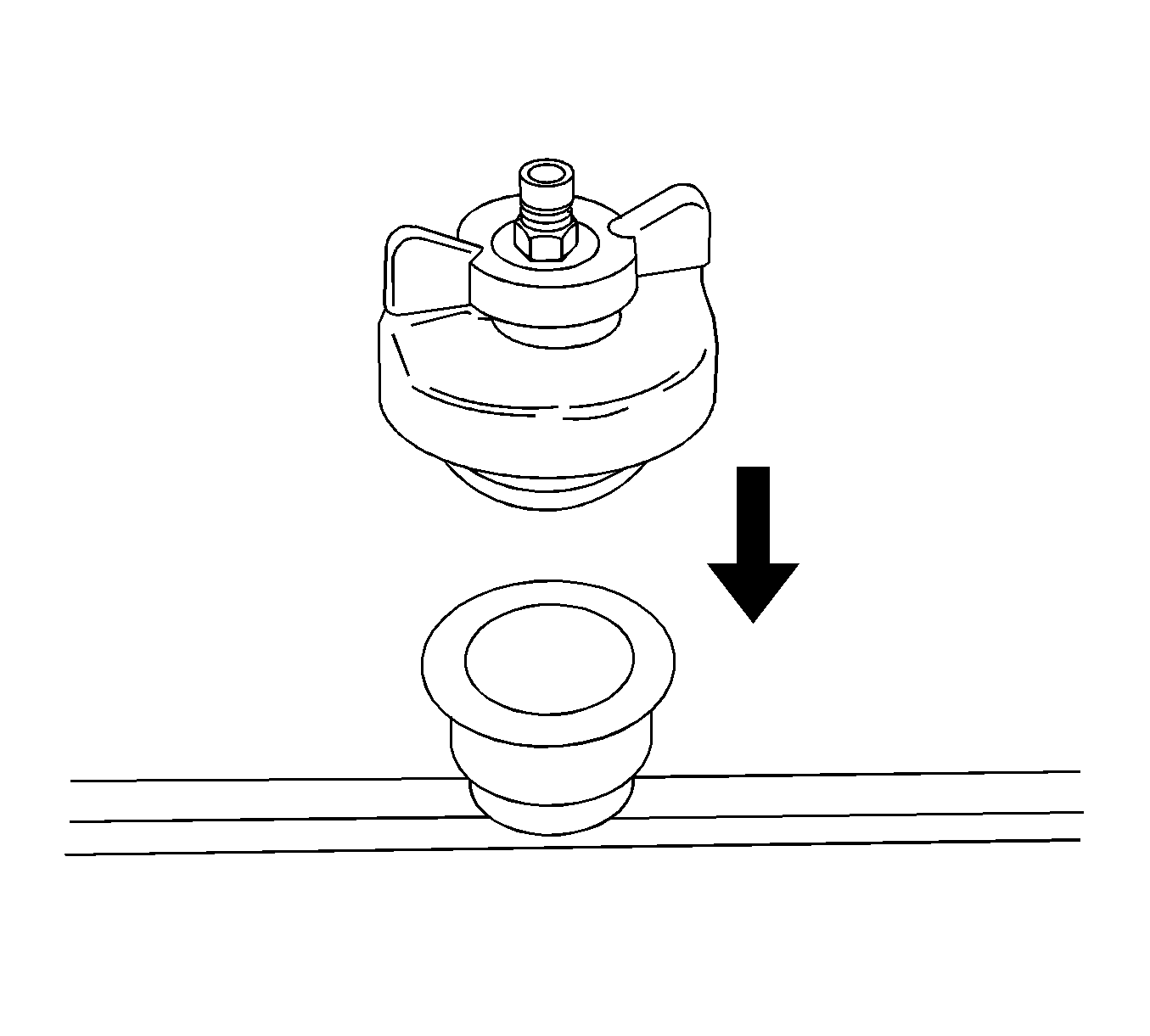
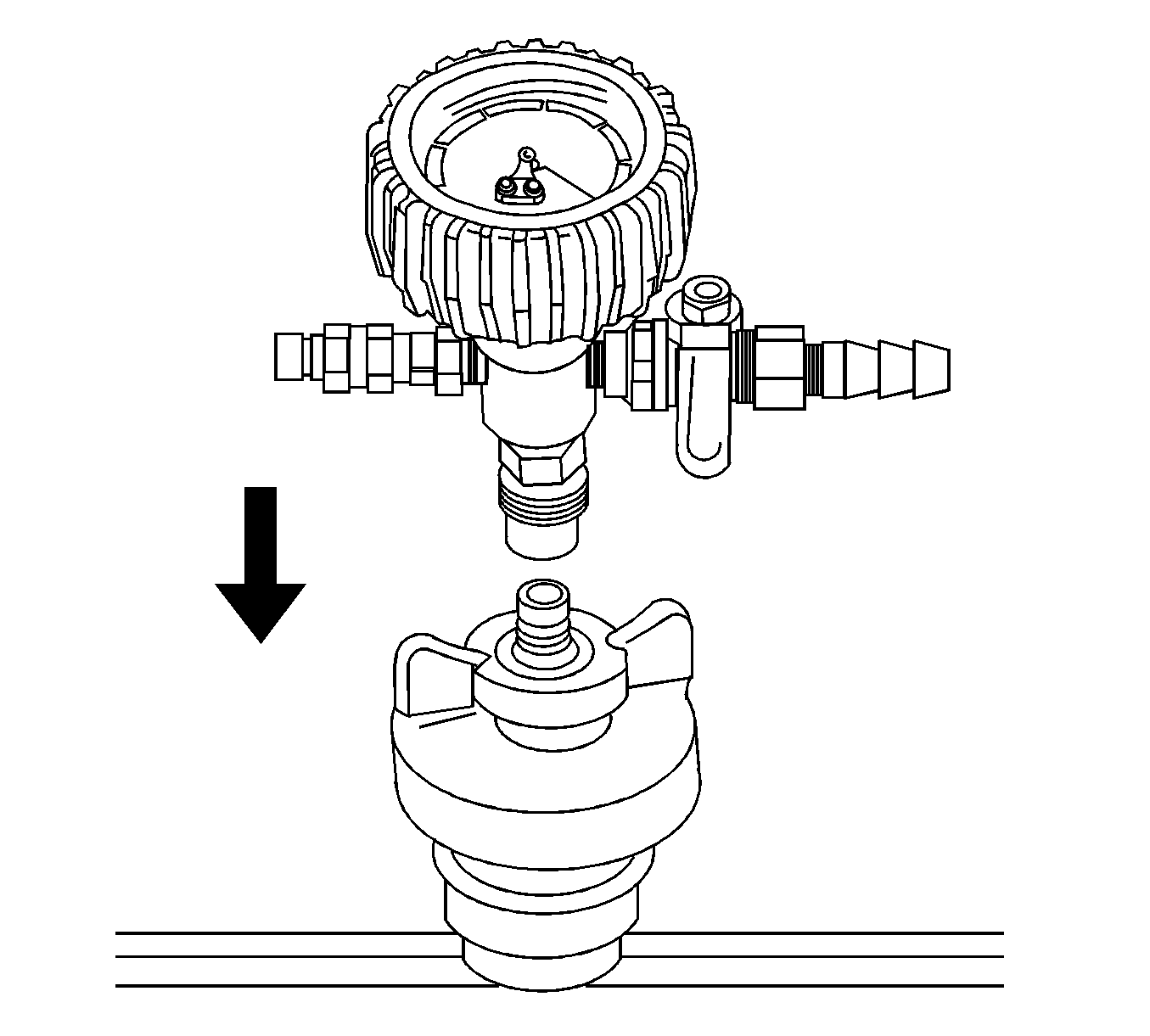
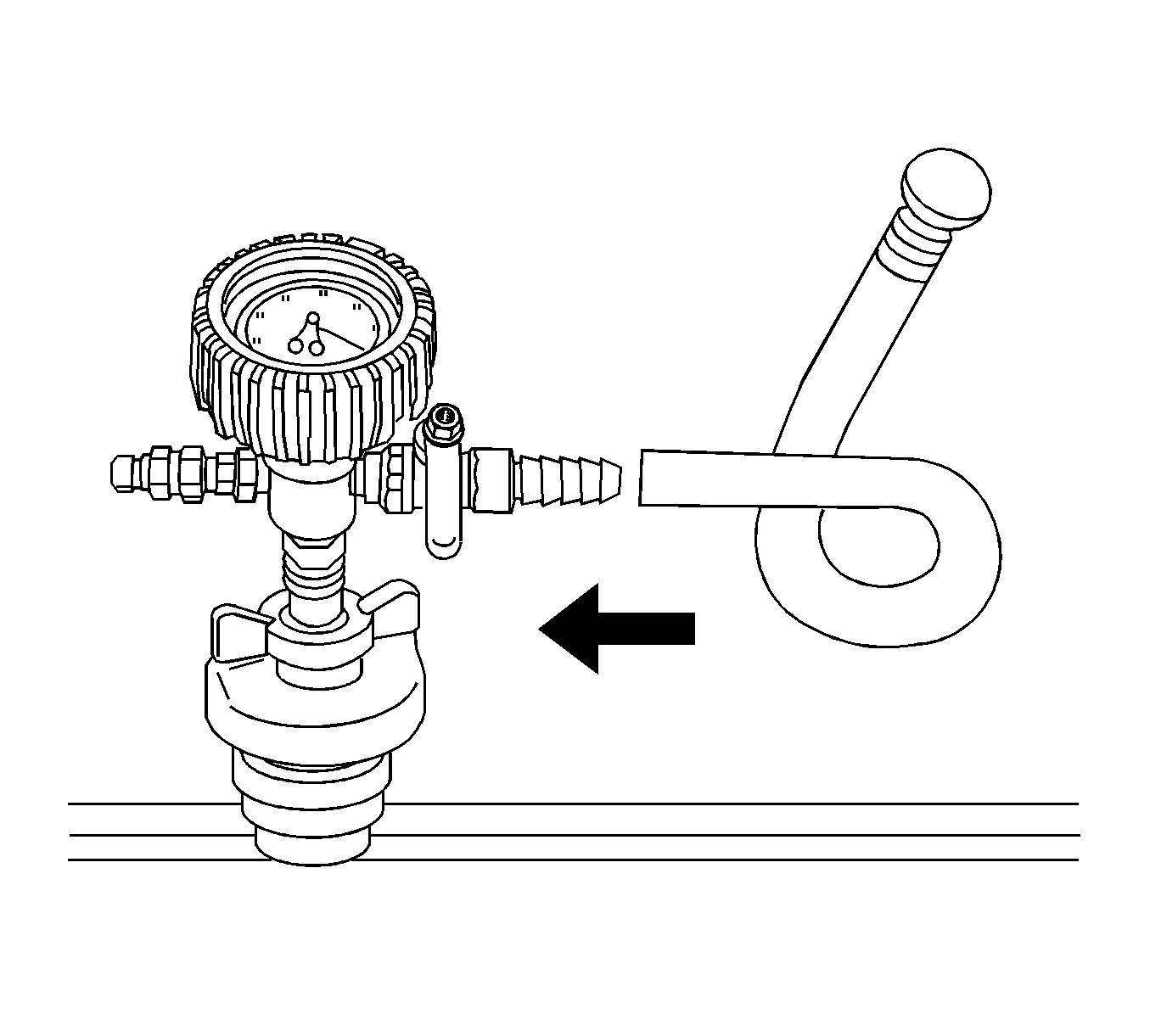
Ensure the valve is closed.
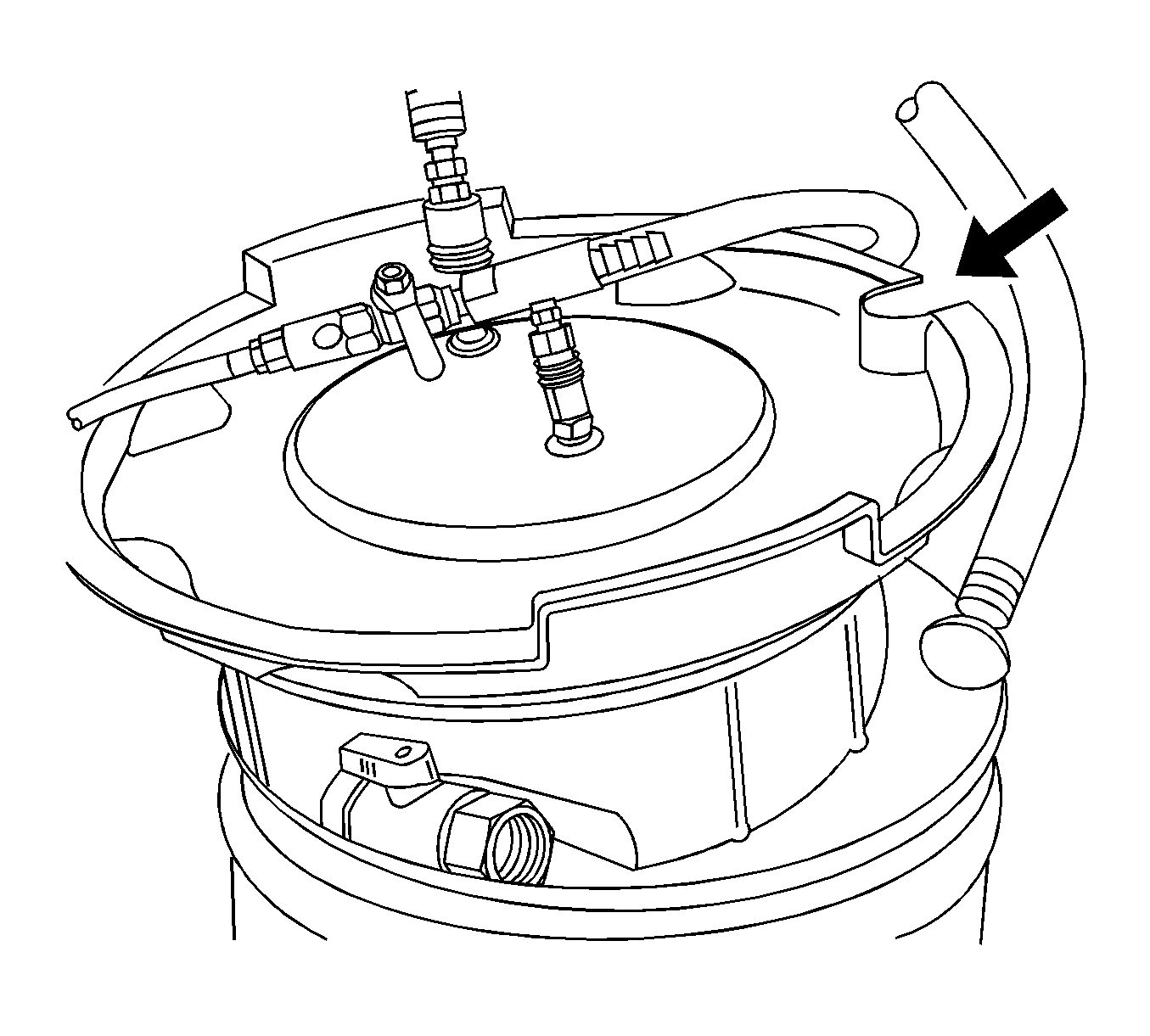
Important: Use a 50/50 mixture of DEX-COOL® antifreeze and clean, drinkable water. Always use more coolant than necessary. This will eliminate air from being drawn into the cooling system.
Important: Prior to installing the vacuum tank onto the graduated reservoir, ensure the drain valve located on the bottom of the tank is closed.
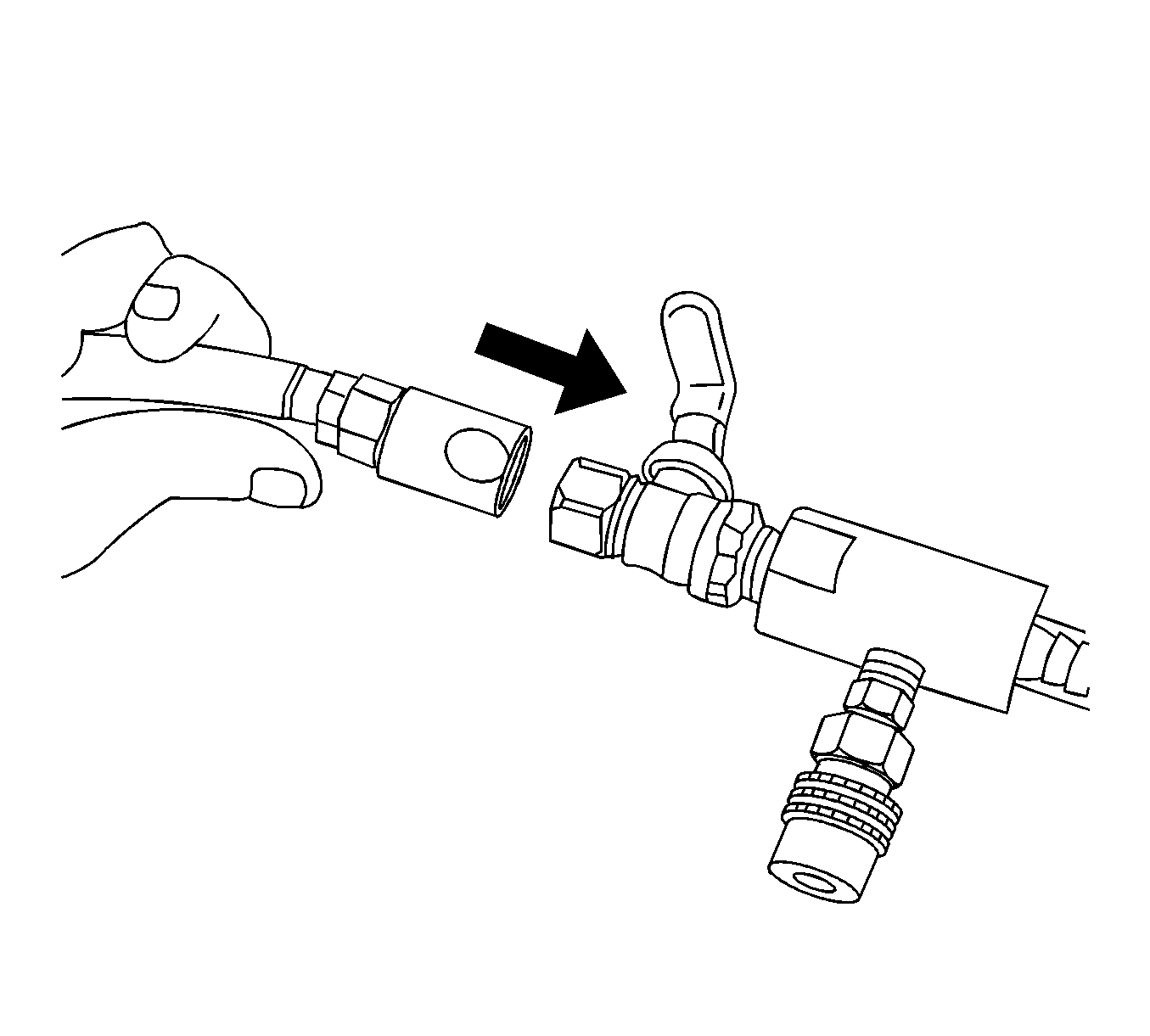
Ensure the valve on the venturi assembly is closed.
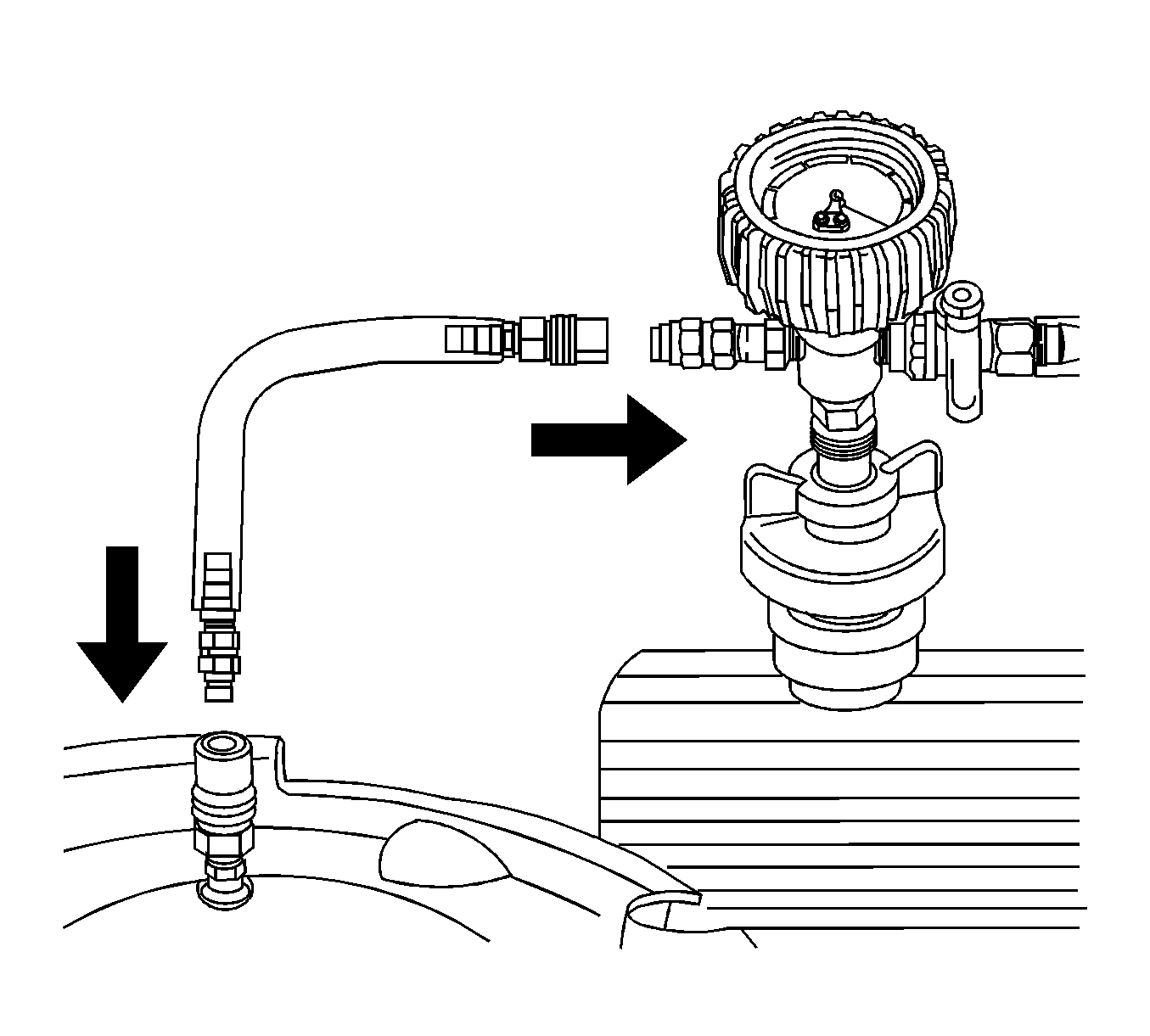

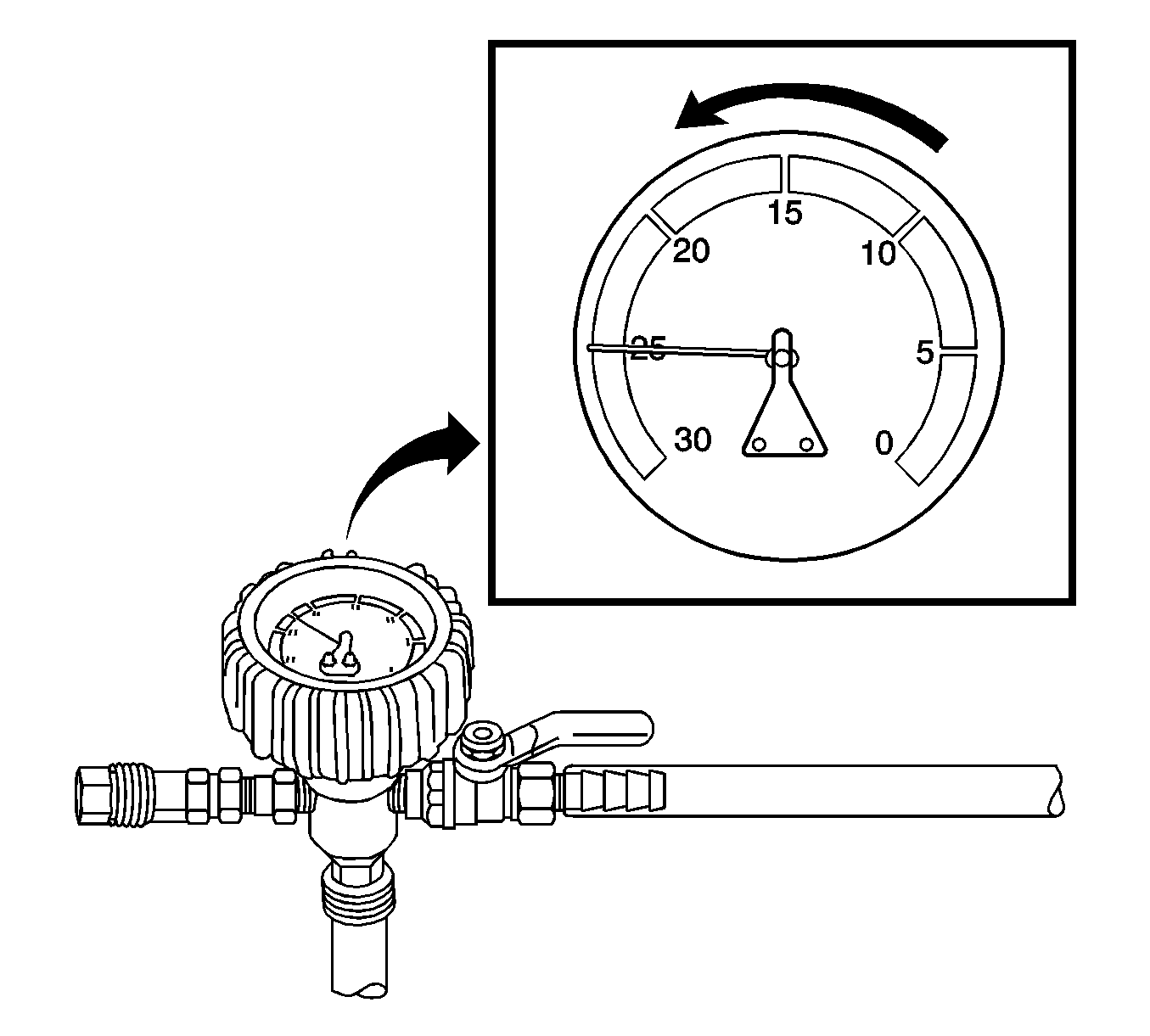
Cooling hoses may start to collapse. This is normal due to vacuum draw.
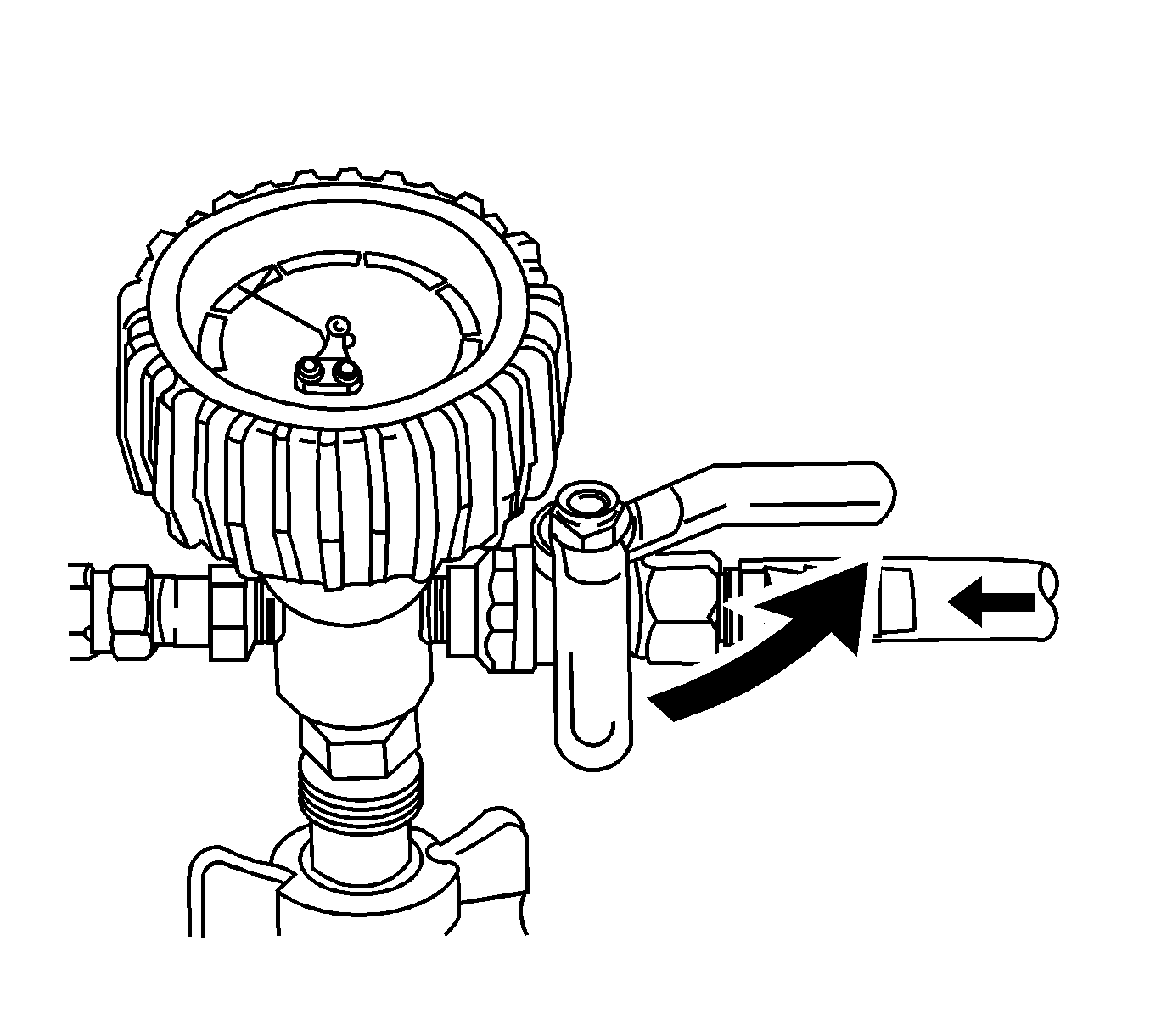
This will eliminate air from the fill hose.
If vacuum loss is observed, refer to Loss of Coolant.
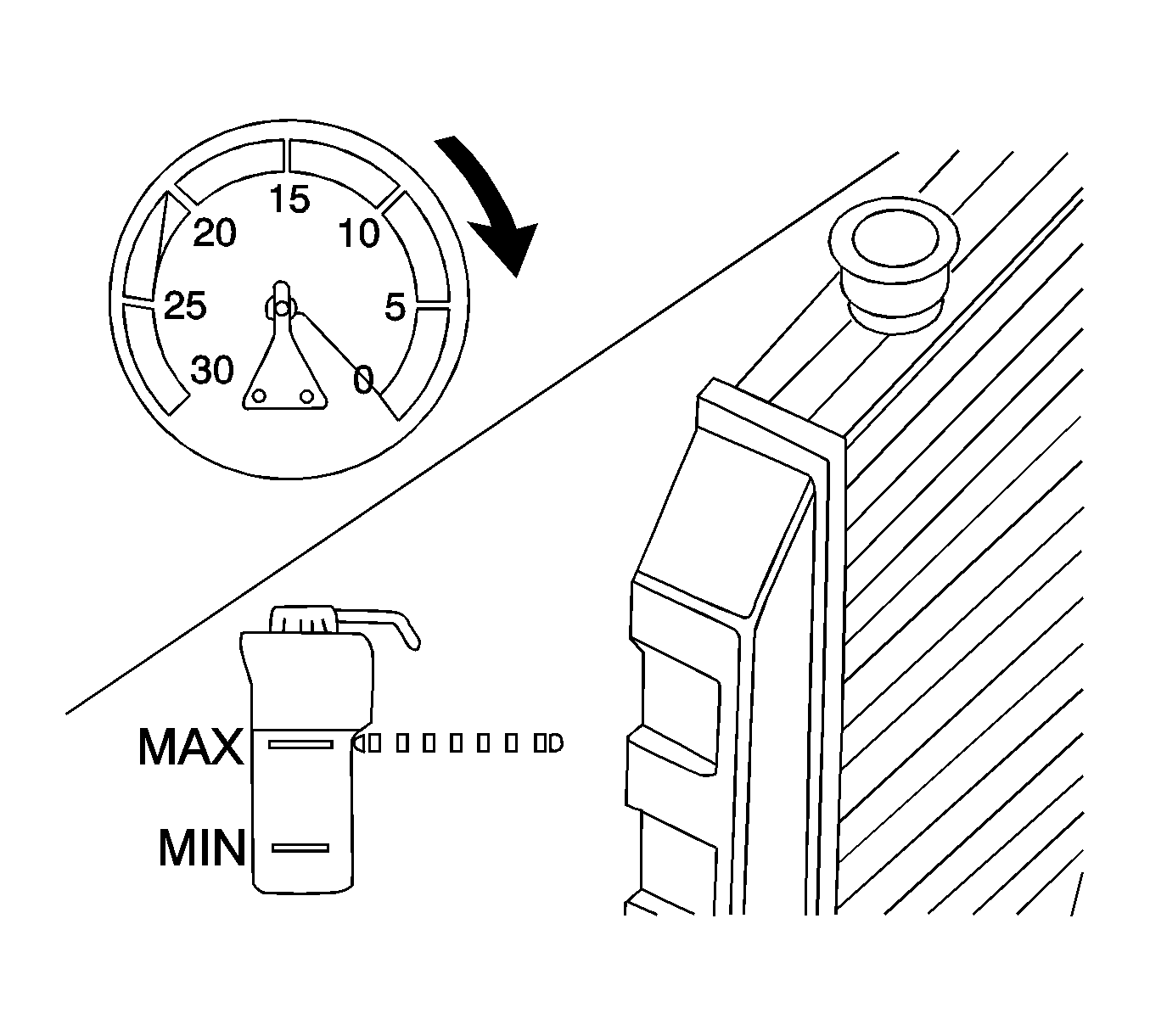
Important: After filling the cooling system, the extraction hose can be used to remove excess coolant to achieve the proper coolant level.
